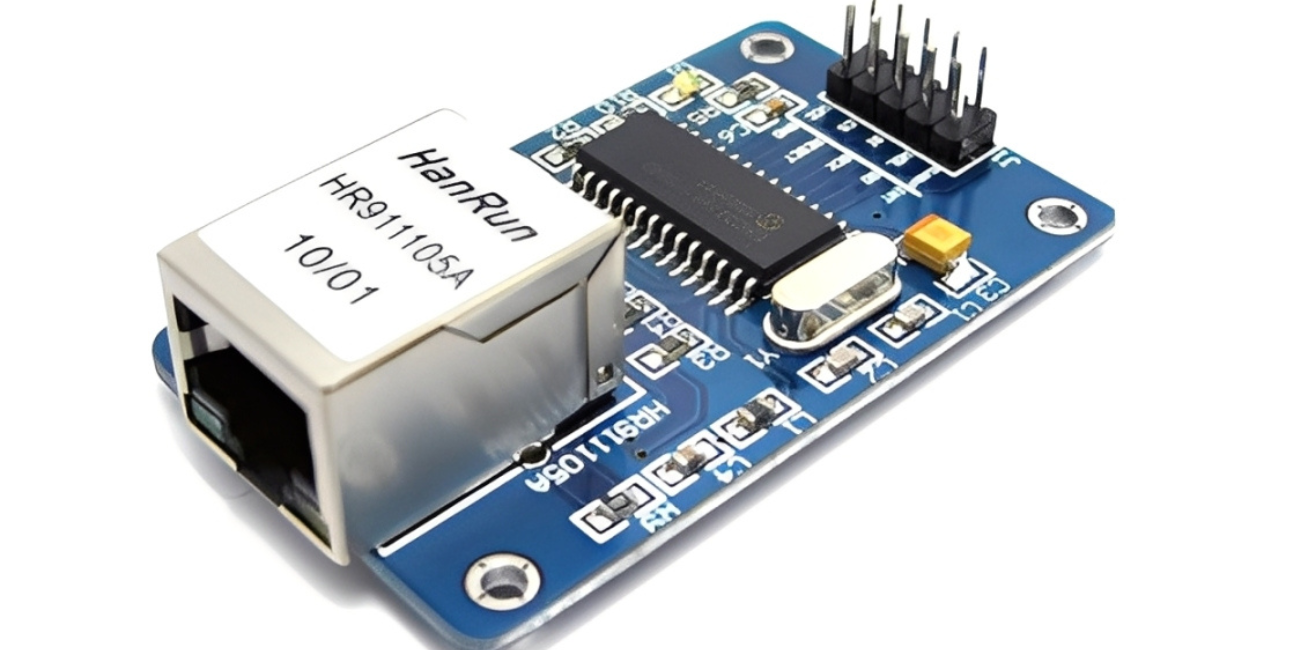
DSM Online Support
Support Master
Welcome to DSM Online
How can I help you today
How can we assist you? please let us know the support you need from DSM Online

In the age of the Internet of Things (IoT), the ability for a small microcontroller to connect to a network is no longer a luxury—it’s a necessity. While WiFi is convenient, many applications require the stability, speed, and reliability of a wired connection. For makers and engineers looking for a cost-effective, high-performance solution to bring their projects onto a local network (LAN) or the internet, the ENC28J60 Ethernet LAN Network Module is an undisputed favorite.
This compact and powerful module is the go-to component for turning a basic Arduino, PIC, or other microcontroller into a full-fledged network device. By leveraging this dedicated chip, you can build everything from a simple web server to a robust data logger. If your next project needs stable, wired communication, mastering the ENC28J60 module is essential for true IoT connectivity.
The ENC28J60 is a standalone Ethernet controller designed by Microchip Technology. It provides an easy-to-use interface for adding network capability to any microcontroller with a Serial Peripheral Interface (SPI).
Wired Reliability: Unlike WiFi, which can be prone to interference, the ENC28J60 provides a rock-solid, physically wired connection. This is critical for industrial monitoring, long-term data logging, or any application where connection loss is unacceptable.
SPI Interface: The module uses the SPI protocol, which is fast and efficient, allowing the microcontroller to communicate rapidly with the chip. This is a significant advantage over slow serial interfaces and makes the ENC28J60 Arduino integration incredibly streamlined.
The Power of the Module: While the ENC28J60 is a bare chip, it is usually sold on a compact breakout board. This board includes the necessary components—the magnetics, the RJ45 jack (the physical port for the Ethernet cable), and often status LEDs—making it a complete, ready-to-use Ethernet networking module.
Why use a dedicated chip like the ENC28J60 when some microcontrollers have built-in network capability?
Cost-Effectiveness: The ENC28J60 is highly affordable, making it perfect for budget-conscious projects, educational kits, and mass production where cost per unit is vital.
Resource Preservation: The ENC28J60 handles all the low-level physical and data-link layer protocols of the network stack. This means your main microcontroller (like an Arduino UNO) is freed from the heavy computational lifting of network packet processing. It only needs to worry about sending and receiving data to the ENC28J60 via SPI, leaving more RAM and processing power for your application code. This is particularly valuable when working with microcontrollers that have limited resources.
Microcontroller Agnosticism: The module can be connected to virtually any microcontroller (Arduino, Raspberry Pi Pico, PIC, etc.) that supports SPI. This flexibility makes it a versatile, platform-independent microcontroller Ethernet solution.
Integrating the ENC28J60 LAN Module with an Arduino or similar board is straightforward, requiring just four SPI wires (SCK, MOSI, MISO, and CS) plus power and ground.
The real challenge, and the reason many makers seek this solution, lies in the ENC28J60 library support. Because the chip is not an all-in-one solution like a Wi-Fi module, it requires a robust library to handle the complex TCP/IP stack. Fortunately, the open-source community has provided excellent, highly optimized libraries (such as the UIPEthernet library for Arduino) that allow you to quickly implement protocols like HTTP (for a web server), UDP, and even simple FTP.
Once connected and coded, your project can perform amazing tasks:
Remote Monitoring: Sending sensor data (temperature, pressure, etc.) directly to a cloud server or local PC.
Web Server: Creating a simple control panel accessible via a web browser to monitor or control your device.
Data Logging: Storing time-stamped data on a remote database or logging it over the network.
Home Automation: Integrating your device directly into a network control system using standard protocols.
While the ENC28J60 is a robust solution, it's important to note that it supports 10BASE-T Ethernet, meaning a maximum speed of 10 Mbps (Megabits per second). In today's world of gigabit connections, this sounds slow. However, for most microcontroller applications—sending sensor readings, receiving short commands, or updating a simple webpage—10 Mbps is more than enough bandwidth. The trade-off is superior stability and resource efficiency over blazing speed, which is a sensible choice for most embedded systems.
The ENC28J60 Ethernet LAN Network Module is the essential component for makers who prioritize stability and cost-effectiveness in their IoT and network-enabled projects. It transforms resource-constrained microcontrollers into reliable network clients by efficiently handling the complexities of the physical network layer. By adding this robust wired network module to your device, you are not just connecting your project to the internet; you are investing in a proven, stable foundation for reliable data exchange.